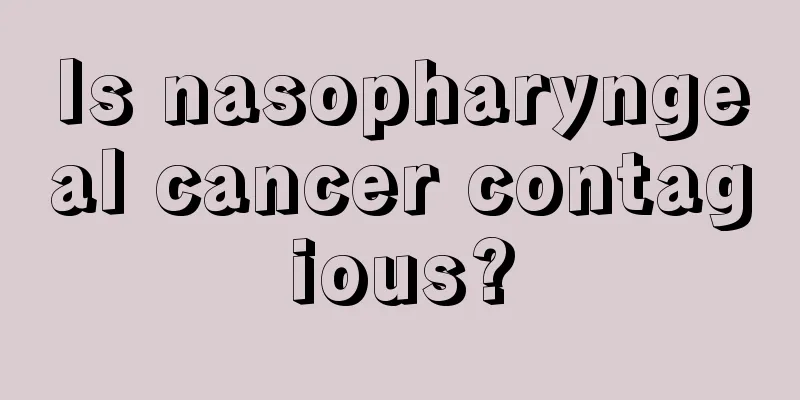Sequelae of convulsion

|
Because children's body resistance is relatively low, they are very prone to some adverse diseases. For example, many children will suffer from febrile convulsions. This situation has a great impact on children, and there will also be many sequelae, such as epilepsy, dizziness or unconsciousness, etc. In the face of this situation, people need to pay special attention. The following is a detailed introduction to the sequelae of febrile convulsions in children. Any sudden high fever caused by extracranial infection can cause convulsions in children, so febrile convulsions are the most common cause of convulsions in infancy and childhood. The incidence rate is approximately 2% to 8%. Has a significant genetic tendency. Its pathogenesis is still not fully understood. This may be mainly because the brain development of infants and young children is not yet complete, and their ability to analyze, identify and inhibit is poor. A weak stimulus can cause strong excitement and diffusion in the brain, leading to abnormal discharge of nerve cells and thus convulsions. Traditional Chinese medicine believes that young children have "pure yang bodies, and when they are affected by various pathogens, they develop heat very quickly, and extreme heat can cause wind." Typical febrile convulsions are more common in children aged 6 months to 3 years and are rare after 6 years old. The children generally have a good physical constitution (pure yang body), and often have convulsions when the body temperature rises suddenly at the beginning of the disease (fever is generated very quickly, and wind is generated by extreme heat), which is more common in upper respiratory tract infections. Convulsions are generally systemic, with few episodes, short duration, and quick recovery, usually lasting from a few seconds to a few minutes, rarely exceeding 15 minutes, and consciousness returns to normal after the convulsion stops. There is no organic disease of the central nervous system and no abnormal signs of the nervous system can be found, and the prognosis is good. However, from then on, 30% to 50% of the children will be prone to convulsions when they have a fever, but these seizures generally no longer occur by school age. Rarely, more than two attacks occur during the same course of the disease. If the high fever persists, convulsions occur repeatedly or continue, you should be careful to rule out serious diseases of the central nervous system or other systems. What should we do about the sequelae of convulsions in children? If the first febrile seizure is simple and the nervous system is normal before the seizure, the incidence of epilepsy is 1%; if there are nervous system abnormalities before the febrile seizure or it is a complex febrile seizure, the incidence of epilepsy is 2% to 3%; if there are nervous system abnormalities before the febrile seizure and it is a complex seizure, the incidence of epilepsy is 9%. There are also reports that if children with febrile convulsions have perinatal abnormalities, when they develop epilepsy, they are often systemic seizures. For other children with febrile convulsions, the convulsions last for a long time, recur repeatedly, or are localized, and when they later turn into epilepsy, they often manifest as psychomotor epilepsy. In short, febrile convulsions generally have a good prognosis. Only a very small number of patients may develop epilepsy and leave sequelae. The incidence rate is 2% to 3% of febrile convulsions. When children with febrile convulsions have the following risk factors, the percentage of conversion to epilepsy increases. (1) Complex febrile seizures: The duration of the seizure is about 15 minutes, the seizure is localized, the temperature is below 38°C, and the fever may occur several times in a row. (2) Febrile seizures recur multiple times. (3) Febrile seizures |
<<: How to solve the problem of being upset and anxious
>>: Does persimmon contain high sugar content?
Recommend
Low-fiber diet is closely related to the cause of colorectal cancer
In recent years, with great progress in the diagn...
How to remove paint from wood
If there is paint on the wood, it can be removed ...
Cholestatic urticaria
In fact, the skin disease urticaria is also close...
Is there a swirl of hair on your back?
In daily life, the sweat hair on our back is gene...
Tips for using brassinolide
The vegetables and fruits we eat every day are al...
What causes itchy urethra in men without any discharge?
The urethral health of male friends is also quite...
What are the symptoms in the late stage of lung cancer? 4 symptoms suggest that you have lung cancer
Hoarseness is the most common symptom of advanced...
Which side is better for sleeping
In life, there are always some people who have th...
What to do if you keep having hiccups
I believe that each of us has encountered the sit...
If you have a bulging disc, here are 6 ways to treat it
Intervertebral disc bulging is a very common dise...
How to use the teacup
Many people don't know much about tea cups. T...
What is the pathological cause of spindle cell sarcoma?
When spindle cell sarcoma occurs, attention shoul...
How to remove porcelain teeth
During the production and use of porcelain teeth,...
What can be done to diagnose uremia
Uremia is not an independent disease, but a syndr...
What causes a hard lump on the back of my hand?
The role of hands is so important. Hands can do s...









